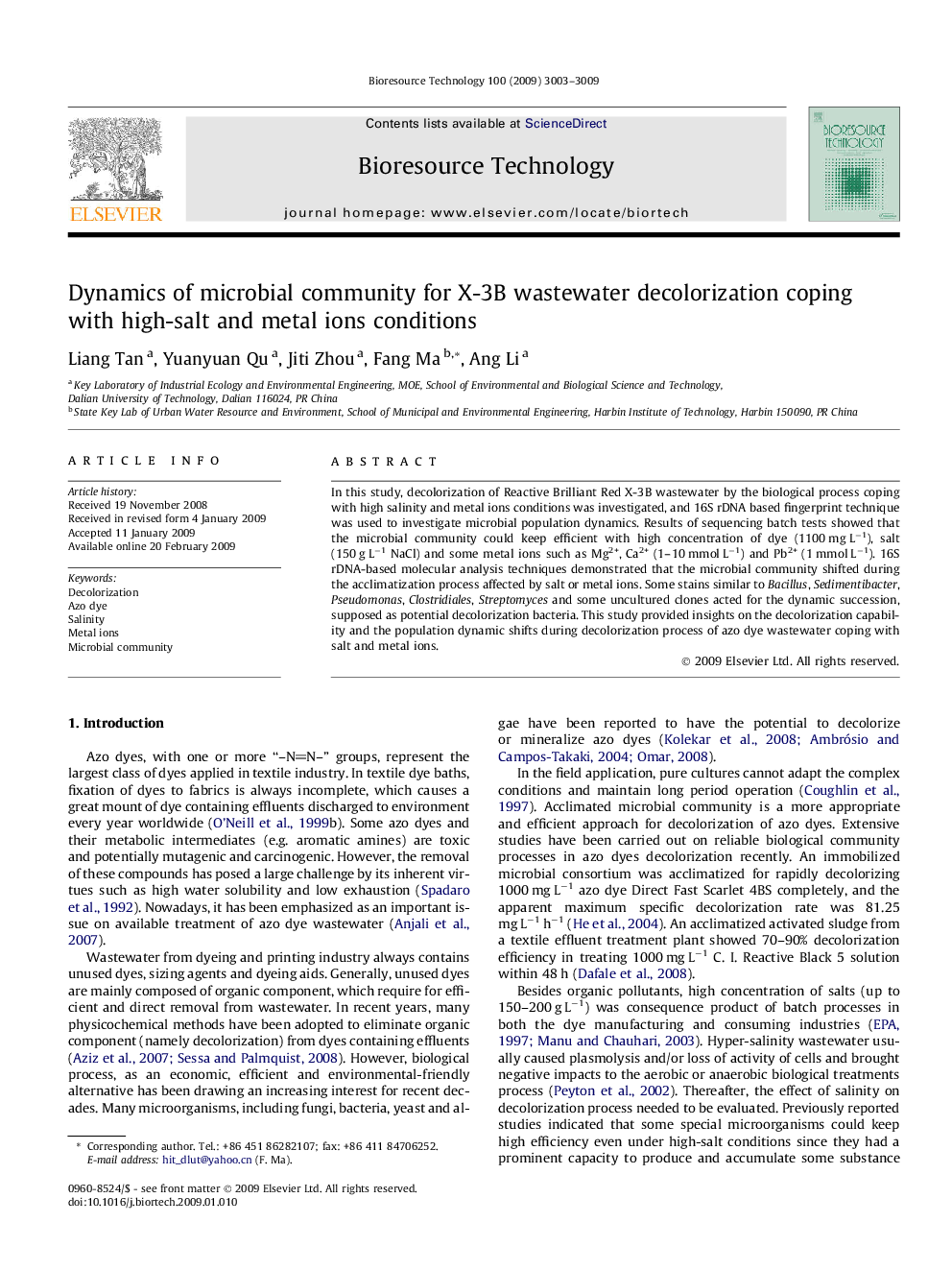| Article ID | Journal | Published Year | Pages | File Type |
|---|---|---|---|---|
| 684984 | Bioresource Technology | 2009 | 7 Pages |
In this study, decolorization of Reactive Brilliant Red X-3B wastewater by the biological process coping with high salinity and metal ions conditions was investigated, and 16S rDNA based fingerprint technique was used to investigate microbial population dynamics. Results of sequencing batch tests showed that the microbial community could keep efficient with high concentration of dye (1100 mg L−1), salt (150 g L−1 NaCl) and some metal ions such as Mg2+, Ca2+ (1–10 mmol L−1) and Pb2+ (1 mmol L−1). 16S rDNA-based molecular analysis techniques demonstrated that the microbial community shifted during the acclimatization process affected by salt or metal ions. Some stains similar to Bacillus, Sedimentibacter, Pseudomonas, Clostridiales, Streptomyces and some uncultured clones acted for the dynamic succession, supposed as potential decolorization bacteria. This study provided insights on the decolorization capability and the population dynamic shifts during decolorization process of azo dye wastewater coping with salt and metal ions.
